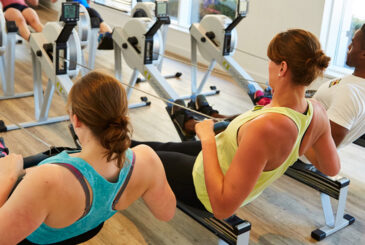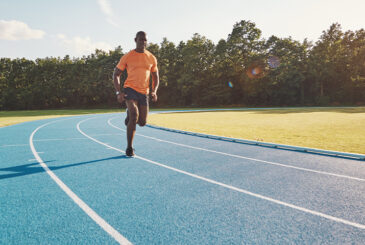In the second of Sean’s articles, he moves on from the basics of how to pace a row and focuses on strategies for completing it to the best of your ability
Harking back to my first competition in 2016 I was fortunate enough to win the one minute race (perks of being heavy). Weight means watts on the erg and that’s why the 500m can suit the bigger rower but in the four minute event I was soundly beaten by a more experienced and skilled rower who had a very sound grasp of the basics, let alone the finer techniques that add crucial meters to a row.
I still practise the basics every time I sit on an erg but it wasn’t until I met Cam Nichol of RowingWod who explained strategy to me that I started to be a more rounded indoor rower. To reiterate what I was taught, a race has a beginning, a middle and an end and the fastest average time across the whole race will most likely give you the best result. There are five basic strategies that can be applied to any distance.
Five basic strategies
The legendary fly and die
Set off heroically and hope you make it to the end – it’s a bold strategy. It’s perfect for 100m. You may possibly get away with it up to 1000m depending upon your engine, but a more planned approach will be better for most people on anything other than a sprint distance.
The flat paced approach
Pick a pace at which you can hold from beginning to end, don’t speed up and don’t slow down. For a race it’s too conservative and won’t give you your best result. I use this on a lot of training rows because it can build confidence in holding a given split and stroke rate, whilst allowing for incremental progression on subsequent efforts.
The negative split
Start off slower than your intended average split and increase your speed as you go. The problem in a race is that a conservative start will see your average /500 higher than where you want it to be. As the race progresses you have to increasingly go faster and faster in an attempt to recover the average /500 which may result in the last portion of the race seeing you need to go much faster than you are capable of.
The positive split
The opposite of the negative split approach. This time you set off fast and as the meters flow by you gradually reduce your speed. Now unless you have decimated the field with your early and mid race speed, you’re unlikely to be in the luxurious position of progressively slowing down and still getting your best possible time.
…and then there is the fifth strategy…
The planned/blended approach (it’s a touch of fly and die, the flat paces and the negative split)
You break the race down in to the beginning, the middle and the end regardless of distance. Admittedly in a 500m race the beginning, middle and end come and go really quickly. After a 10-15 stroke race start you’ll be through 150m and straight into the middle phase and in the blink of an eye you start to shorten the slide and drive for home.
I’d like to say by comparison a 2k is a more sedate affair but it’s not. The race sections are just easier to define because of the increased distance. Plan each section with a target in mind. I was taught to draw out my 2k plan. Be as meticulous as you like, from knowing the average split you want over the whole distance, to the pace you want to see during each phase and the stroke rates you will use during each portion. The plan is to get yourself to the final section of the race, then rip up the plan and finish strongly and ahead of schedule.
In the beginning you have your race start – get the flywheel humming and driving that /500 down. Then as you finish the start phase you lengthen the stroke, reduce your SR gradually and settle on, or just over your race average /500.
Now you’re in the meat of the race count the meters in 100s. Talk to yourself. Concentrate on your form. Connect to the machine. Remind yourself to do all the good stuff you’ve practised. Breathe! Feel the rhythm! This is where being able to sit at a chosen pace will pay off. This mid section is long so settle in. As you get to around 750-700m to go, you should be able to see the end of the race approaching if it wasn’t for the sweat in your eyes, burning lungs and lactic acid flooding your muscles.
Now is the time to focus
Chip away at your /500, knock tenths off the /500 as you pass each 100m point. Get within 500m to go. Now you can think about ditching the end of race plan.
Keep increasing speed gradually until you’re ready to sprint for home. Here is where you empty the tank. Your rowing form has now fallen by the wayside but you’re here at the end and about to finish gloriously.
The planned approach has definitely worked for me in the past. Sitting on a erg knowing that you have a strategy and more importantly knowing that you can execute it definitely calms the nerves. Race knowing you possess the skills to execute your plan. Know that your training has given you the engine to produce your best and above all know that the erg can help develop the mental resilience to believe in yourself so that when the closing section of the race arrives you know you have more to give.
Just remember when you finish your race don’t collapse off the erg!










